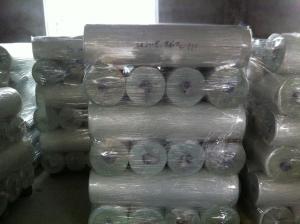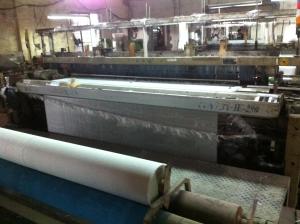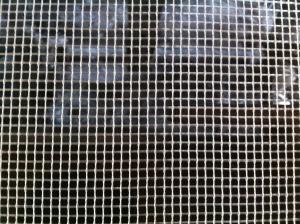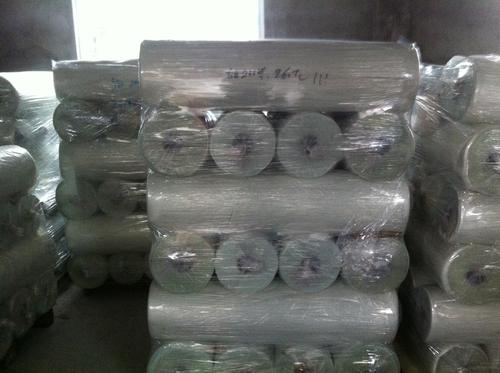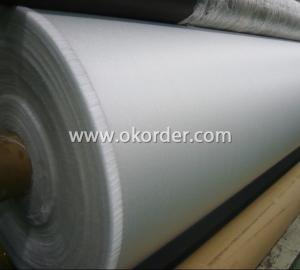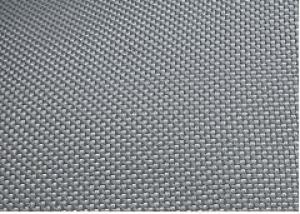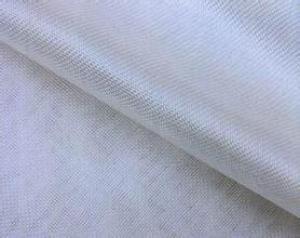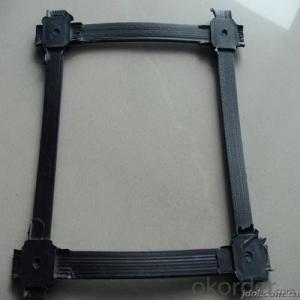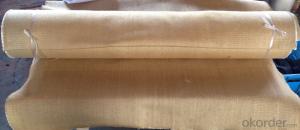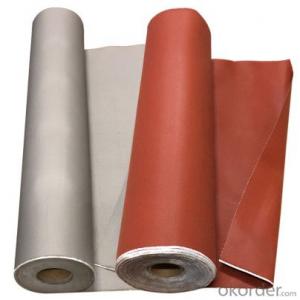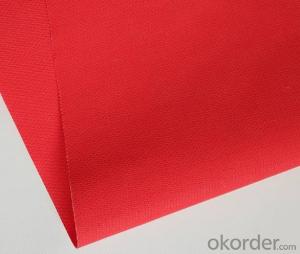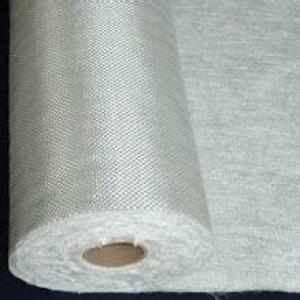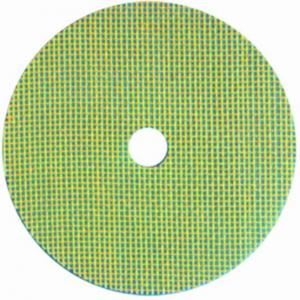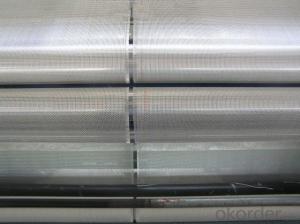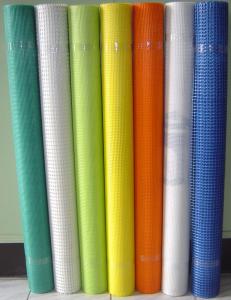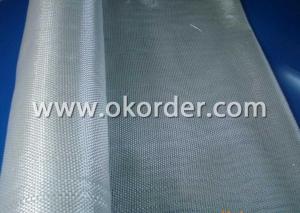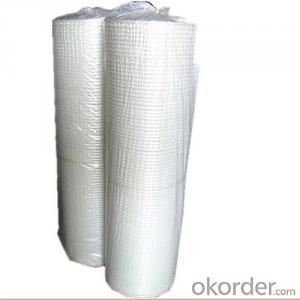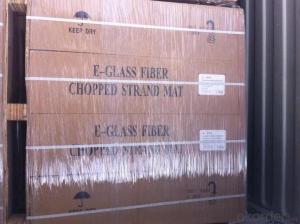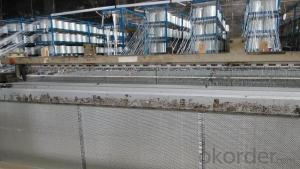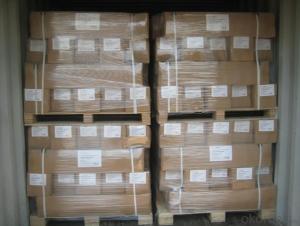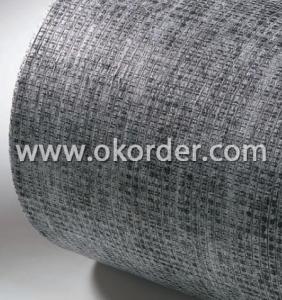Fiberglass Fabrics Grinding Wheel Cloth
- Loading Port:
- Shanghai
- Payment Terms:
- TT OR LC
- Min Order Qty:
- -
- Supply Capability:
- 200吨 m.t./month
OKorder Service Pledge
Quality Product, Order Online Tracking, Timely Delivery
OKorder Financial Service
Credit Rating, Credit Services, Credit Purchasing
You Might Also Like
fiber glass
| Specifications of fiberglass cloth for grinding wheel | ||||||||
| style | tex | inch | (N/50mm) tensile strength | weave | ||||
| (g/㎡)weight | warp | fill | warp | fill | warp | fill | ||
| CG85-14 | 85±5% | 44×2 | 66 | 14±0.5 | 14±0.5 | ≥900 | ≥700 | Leno |
| CG125-14 | 125±5% | 66×2 | 99 | 14±0.5 | 14±0.5 | ≥1300 | ≥1300 | Leno |
| CG125-8 | 125±5% | 99×2 | 198 | 8±0.5 | 8±0.5 | ≥1000 | ≥1000 | Leno |
| CG130-7×6 | 130±5% | 132×2 | 264 | 7±0.5 | 6±0.5 | ≥1200 | ≥1100 | Leno |
| CG160-5 | 160±5% | 198×2 | 396 | 5±0.5 | 5±0.5 | ≥1300 | ≥1300 | Leno |
| CG190-6 | 190±5% | 198×2 | 396 | 6±0.5 | 6±0.5 | ≥1500 | ≥1500 | Leno |
| CG235-8×6 | 235±5% | 198×2 | 495 | 8±0.5 | 66±0.5 | ≥2100 | ≥1900 | Leno |
| CG260-5 | 260±5% | 330×2 | 660 | 5±0.5 | 5±0.5 | ≥2200 | ≥2200 | Leno |
| CG320-5×4 | 320±5% | 330×2 | 1200 | 5±0.5 | 4±0.5 | ≥2600 | ≥2600 | Leno |
| CG380-5×4 | 380±5% | 528×2 | 1200 | 5±0.5 | 4±0.5 | ≥3200 | ≥2600 | Leno |
| CP145-14 | 145±5% | 132 | 132 | 14±0.5 | 14±0.5 | ≥1500 | ≥1500 | Plain |
| CP220-8 | 220±5% | 396 | 396 | 8±0.5 | 8±0.5 | ≥2200 | ≥1800 | Plain |
| CP260-8 | 260±5% | 396 | 396 | 8±0.5 | 8±0.5 | ≥2200 | ≥2200 | Plain |
| CP330-8 | 330±5% | 528 | 528 | 8±0.5 | 8±0.5 | ≥2900 | ≥2900 | Plain |
| CP420-8 | 420±5% | 660 | 660 | 8±0.5 | 8±0.5 | ≥3500 | ≥3500 | Plain |
| CP250-9 | 250±5% | 352 | 352 | 9±0.5 | 9±0.5 | ≥2000 | ≥2000 | Plain |
| CP275-9 | 275±5% | 396 | 396 | 9±0.5 | 9±0.5 | ≥2300 | ≥2300 | Plain |
| CP300-9 | 300±5% | 440 | 396 | 9±0.5 | 9±0.5 | ≥2800 | ≥2600 | Plain |
| CP260-11 | 260±5% | 297 | 297 | 11±0.5 | 11±0.5 | ≥2200 | ≥2200 | Plain |
| CP330-11 | 330±5% | 396 | 396 | 11±0.5 | 11±0.5 | ≥2900 | ≥2900 | Plain |
| CP180-18 | 180±5% | 132 | 132 | 18±0.5 | 18±0.5 | ≥1900 | ≥1900 | Plain |
- Q: Is fiberglass fabric recyclable?
- Yes, fiberglass fabric is recyclable. Fiberglass is made from thin strands of glass that are woven together to create a fabric. While it is not biodegradable, it can be recycled by melting it down and reusing it in the manufacturing of new fiberglass products. The recycling process involves grinding or shredding the fabric into small pieces, then heating it to high temperatures to melt the glass fibers. The molten glass is then shaped into new products or used as filler material. Recycling fiberglass fabric helps reduce waste and conserves resources, making it an environmentally friendly option.
- Q: How does fiberglass fabric compare to Kevlar fabric?
- Fiberglass fabric and Kevlar fabric are both widely used in various industries for their desirable properties, but they have distinct differences that make them suitable for different applications. Firstly, fiberglass fabric is composed of fine strands of glass fibers that are woven together. It is known for its excellent strength and durability, making it a popular choice for applications requiring high tensile strength and resistance to abrasion. Fiberglass fabric is also highly resistant to heat and chemicals, making it suitable for use in insulation, electrical components, and corrosion-resistant applications. On the other hand, Kevlar fabric is made from synthetic para-aramid fibers, which are known for their exceptional strength-to-weight ratio. Kevlar fabric is significantly stronger than fiberglass fabric, as it possesses a higher tensile strength. This makes it ideal for applications where weight reduction and high impact resistance are critical factors, such as bulletproof vests, body armor, and aerospace components. Another notable difference between the two fabrics is their resistance to heat. While fiberglass fabric has excellent heat resistance, Kevlar fabric exhibits remarkable flame resistance, making it highly suitable for applications where fire protection is crucial, such as firefighting suits and thermal insulation. In terms of cost, fiberglass fabric is generally more affordable compared to Kevlar fabric, which is relatively expensive due to its advanced manufacturing process and superior performance characteristics. In conclusion, the choice between fiberglass fabric and Kevlar fabric ultimately depends on the specific requirements of the application. Fiberglass fabric excels in providing strength, durability, and resistance to heat and chemicals, while Kevlar fabric offers exceptional strength-to-weight ratio, impact resistance, and flame resistance.
- Q: Can fiberglass fabrics be used for sports or recreational equipment?
- Sports and recreational equipment can indeed utilize fiberglass fabrics. Known for its exceptional strength and durability, fiberglass proves to be an ideal material for a diverse range of applications in these fields. It finds extensive use in crafting items such as kayaks, canoes, surfboards, skateboards, and even sporting goods like hockey sticks and golf club shafts. Moreover, the lightweight nature of fiberglass adds to its popularity, enabling improved maneuverability and enhanced performance. The flexibility of fiberglass fabrics further allows for molding them into various shapes and sizes, providing immense versatility in the design of sports and recreational equipment. Overall, fiberglass fabrics stand as a highly dependable and extensively employed material in the manufacturing of sports and recreational equipment.
- Q: How to use silica gel cloth and glue?
- Silicone fiber cloth is divided into 2 kinds of adhesion, silica gel and fiber cloth
- Q: Are fiberglass fabrics resistant to mold or mildew?
- Yes, fiberglass fabrics are generally resistant to mold or mildew due to their non-porous nature and lack of organic materials that promote mold growth.
- Q: Is fiberglass fabric resistant to birds?
- No, fiberglass fabric is not inherently resistant to birds. Birds can easily peck and damage fiberglass fabric if they come into contact with it.
- Q: Is fiberglass fabric resistant to chemicals in chemical processing plants?
- Yes, fiberglass fabric is generally resistant to chemicals in chemical processing plants. Fiberglass is known for its excellent chemical resistance properties and is widely used in various industrial applications, including chemical processing plants. It is highly resistant to a wide range of chemicals, including acids, alkalis, solvents, and many other corrosive substances found in chemical plants. This resistance makes fiberglass fabric a reliable and durable material for use in the construction of equipment, piping, tanks, and other components in chemical processing plants. However, it is important to note that the specific type and concentration of chemicals being handled should be considered when selecting the appropriate fiberglass fabric to ensure optimal chemical resistance.
- Q: Are fiberglass fabrics resistant to staining or discoloration?
- Yes, fiberglass fabrics are generally resistant to staining or discoloration.
- Q: Can fiberglass fabric be used for car covers?
- Yes, fiberglass fabric can be used for car covers. Fiberglass fabric is known for its durability and resistance to tearing, making it a suitable material for protecting cars from various external elements such as dust, dirt, and UV rays. It is also lightweight, easy to handle, and can be easily customized to fit different car sizes and shapes. Additionally, fiberglass fabric has excellent heat insulation properties, which can help protect the car's interior from extreme temperatures. However, it is important to note that fiberglass fabric on its own may not be waterproof, so it is recommended to use a waterproof coating or layer underneath the fabric for added protection against rain and moisture.
- Q: How is fiberglass fabric used in the production of windbreakers?
- Fiberglass fabric is used in the production of windbreakers primarily for its durability and weather-resistant properties. It is often used as a reinforcing material in the construction of windbreaker shells to provide strength and resistance against harsh winds and environmental elements. The fiberglass fabric helps to maintain the structural integrity of the windbreaker, ensuring its longevity and performance in challenging weather conditions.
Send your message to us
Fiberglass Fabrics Grinding Wheel Cloth
- Loading Port:
- Shanghai
- Payment Terms:
- TT OR LC
- Min Order Qty:
- -
- Supply Capability:
- 200吨 m.t./month
OKorder Service Pledge
Quality Product, Order Online Tracking, Timely Delivery
OKorder Financial Service
Credit Rating, Credit Services, Credit Purchasing
Similar products
Hot products
Hot Searches
Related keywords
